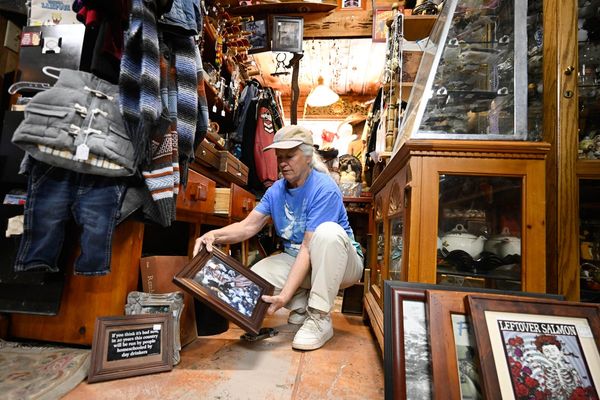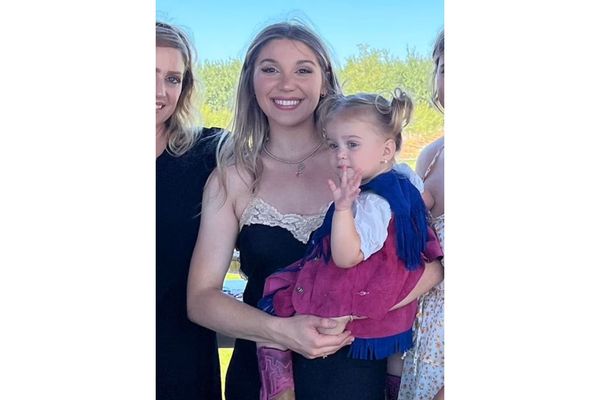One of my favorite places in the world is Hawai'i. It's beautiful and lush, the food is phenomenal once you get outside the tourist hot spots, and there's a sense of scale that you can't get on anything but an island in the middle of the Pacific.
My wife and I also nearly died on a scooter during one standout visit. We still chuckle about it.
But people tend to forget the colonial history of the islands, and they forget the damage those people and policies did to the island's ecosystem.
Plantations were erected using non-native agricultural practices, grasses were planted, and animals were brought in both by accident—and by design. This, in turn, all led to huge flora and fauna issues in the present day. But again, people don't see or think about it since they tend to stick to those super touristy areas or "must-see" destinations on every Best of Hawai'i travel list.
One of the bigger problems currently facing the Hawaiian islands, however, are Axis deer. This is an animal that was brought to the island in small numbers, beginning in the 1860s. But it has quickly ballooned into a major ecological issue as this type of deer breeds quickly, has no known predators on the island's temperate mountain ranges, and habitually eats like its grassy meals are its last.
It also doesn't have the evolutionary drive to stop breeding when its population size grows too big for its resources. However, despite these downsides, in the interim decades, this deer has become an incredibly valuable resource to locals. It's allowed them to harvest fresh, protein-dense wild game that's essentially free of charge. It's an invaluable asset for a population where anything from the mainland comes with a high import tax.
That resource, however, was not being actively managed so that it could be a local food resource without severely impacting native ecosystems as well as the islands’ food systems. And that reality was the catalyst for Jake Muise to start Maui Nui Venison, a wild endeavor designed to help find that balance.
Mark Seacat, the brand’s Mission Partner Director, tells RideApart, “It’s a 300-year project.” And the company blazes that path using Polaris UTVs and thermal scopes.
“Yeah, it's like a perfect storm,” says Seacat, adding, “They reproduce pretty quickly and are very successful in growing their young. Like, you live in Utah. Mule deer and elk are in your area, right? Elk will have one calf every year. But that calf has a 33% chance of surviving. Axis deer over a 3-year time period, they'll have four fawns, and those fawns have almost a 100% chance of surviving. And so you can see how that's just blows up really, really quickly.”
Perhaps unsurprisingly given those numbers, the deer populations have exploded.
Axis deer populations grew exponentially across Maui, Moloka’i, and Lānaʻi thanks to a few key points. These include the islands' climate, which allows the deer to reproduce all year long; the lack of any natural predators (this deer is originally from India, and Hawai’i has no big cats to eat them); and of course the plentiful plant life that occurs naturally, which can comfortably sustain large deer herds.
They were first brought to the island of Moloka’i, but later spread to nearby Maui and Lānaʻi, too. A handful of Axis deer were also brought illegally to the Big Island more recently. But fearing further spread, the state then brought in Muise, along with a small team, who were successful in finding and taking the animals.
Again, the islands can sustain large populations, but that only goes so far.



"It's an animal that [Hawaiians] love, it's food for everyone on the island," says Muise in the video titled Balance embedded above, adding, "And I didn't realize that there was really any negative impact of that relationship with that animal and that place until my fourth or fifth year of college when we went back and we went to a really dry section of the island and I turned a corner and there was a hundred deer laying there dying of essentially malnutrition."
It was an eye-opening experience, and one that propelled him into being the more conservation-focused individual he's become, and build a team who work to help balance populations and channel that work into giving back to the community and customers alike.
Muise and his team at Maui Nui Venison now cull that animal's numbers by using pickups, Polaris UTVs, and a set of rifle teams outfitted with thermal scopes to help balance the populations across Maui.

“We spend more money on those UTVs than just about anything else in our business,” says Seacat, adding, “because we're using them every single night and they're carrying heavy payloads. And the best thing that we've found so far are the Polaris XD. We’re just, we're just hard on them. We tried all the different brands and Polaris has been the one that seems to last the longest.”
And having been to the islands, it's clear why they use the Polaris XD. The terrain is gnarly, the vegetation is thick, and you need something rugged as hell to get your harvested deer out of these places.
“Hawaii is a tough place to go off-road,” says Seacat, “Everything's sharp. Everything's trying to tear apart the UTV. Like, you can't see because the grasses grow after it rains and it's really, really tall. Like, man, you take a wrong turn and you got a sharp lava rock and…we spend so much money on tires.”
But since Maui Nui culls so many deer, they need something that can handle those rigors, as well as haul a payload of venison in the back, too.
“We're able to load more deer onto these UTVs versus the older ones back in the day,” says Seacat, as the crew has tried nearly all the major UTV manufacturers. They’re now able to throw around 11 deer into each side-by-side. This makes the whole processing job that much easier, as well as more efficient in the field, in both curbing the deer’s numbers on the landscape, as well as getting them back to their USDA-inspected butchering facility.
But the wild game harvested doesn’t just go to customers for $33 a pound.

Their mission wasn’t eradication, but balance. And balance in both the ecological sense, and also in the societal one. That’s where the company’s food-sharing Holo 'Ai program began. Holo 'Ai translates as “to share food,” and that’s what Maui Nui does. “
“We started this in the pandemic because people needed access to it. And it's the healthiest red meat there is on planet Earth,” says Seacat, “but for two nights a month, we harvest specifically for the community. And at this point, we've shared 189,141 pounds of ground deer with the community.”
That sharing is done through strategically placed freezers around the island where locals can show their Hawai’i State IDs and get two pounds free of charge. If you're trying to do the math of how much that'd be worth if they'd sold it, based on ground prices only, that's about $6,250,000 of revenue. But that's not the point.
“It's just Hawaiian culture to take care of the community, serve the community, give back,” says Seacat of the organization. The mission here isn't revenue.
Seacat says that Maui Nui sells out of everything the company produces. Every pound of ground, every rib chop, every tenderloin. But they’ll never harvest more than they already do. “We'll never make more than what we currently do because it's all about population balance. This just isn't about sales goals, it's about balance goals,” he tells me.
To that end, balance is even sought in how they harvest the deer. In the daytime, local and out-of-state hunters are given preference to the island’s Axis deer population. By contrast, Maui Nui’s harvest teams only operate at night and on private lands.

So not only are they putting miles of rough terrain on these Polaris UTVs, as well as loading them up with nearly a dozen deer; but they’re also doing so under the cover of total darkness. That means that the harvest teams have to have military-style precision in their shooting capabilities, utilizing thermal scopes.
Now, I specifically wanted to highlight Maui Nui because I think it's important to showcase that hunters and hunting, along with side-by-side ownership, can play an important role in conservation. In a world that's so divisive, these folks are doing right not only by their community but also by the local island ecosystem, too.
It's a true success story, and one that doesn't happen without forward-thinking and resource-driven conservation.
“This is a 300-year project,” states Seacat, “It’s really hard for people to fathom beyond their own lifetime. And it's a 300-year project because if we do a good job on Maui, koa trees start growing again. If those trees grow, then they bring back the kinds of clouds and rain that havenʻt really formed in a long time because of the deforestation issues from ungulates [Axis deer]. If we do a good job here, we are getting closer to being an ecosystem that's working in harmony. If we do a good job, there's still deer here. People are still surviving on deer, but we're protecting this area, too.”







